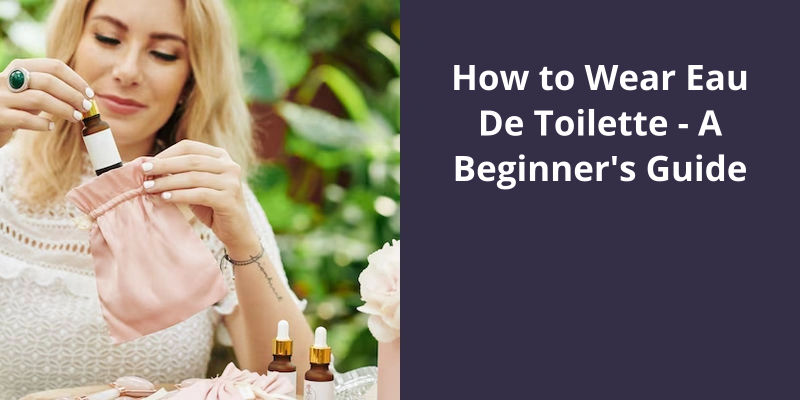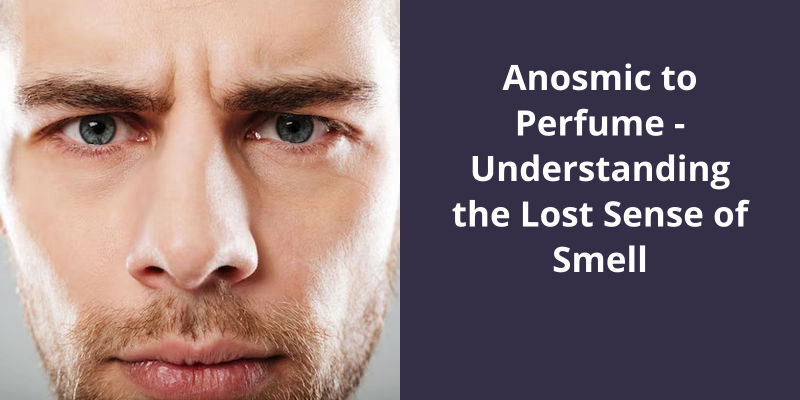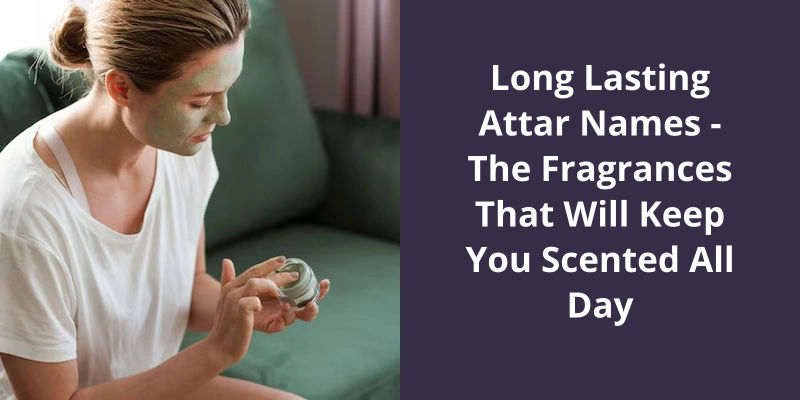Wearing Eau De Toilette starts with a clean body, preferably just after a shower when your pores are open. Spray the Eau De Toilette about 3-6 inches away from your body, targeting areas like your neck, chest, and wrists as they are warm spots that can help in diffusing the fragrance. Avoid rubbing the fragrance into your skin as it can break down its essence, losing its full potential. You may reapply it throughout the day as needed since Eau De Toilette usually lasts for about four to five hours. Remember not to overdo it, 1-2 sprays is usually enough.

Where Do You Use Eau De Toilette?
Eau de toilette is a luxurious fragrance that can be used in a variety of situations. While it’s often worn as a daily scent, it can also be used for special occasions.
One of the best times to use eau de toilette is after a shower or bath. Applying the fragrance to your freshly cleaned body can help to enhance the scent and make it last longer. Additionally, you may want to consider applying it before you get dressed to ensure that the fragrance isn’t affected by the fabric of your clothing.
In terms of application, it’s important to remember that less is often more. You don’t want to overpower others with your fragrance, so start with a small amount and increase as necessary. Additionally, be mindful of the amount you apply to each area of your body. You want to focus on the heated areas, but you don’t want to apply too much in any one spot.
Choosing the right type of fragrance can be a daunting task, especially when faced with the decision between eau de toilette and eau de parfum. It’s important to understand the differences between the two in terms of scent, concentration and lasting power, so you can pick the best one that suits your needs and preferences.
How Do You Wear Eau De Toilette vs Eau De Parfum?
The concentration of perfume oil, or “juice,” is the primary difference between eau de toilette and eau de parfum. This difference in concentration affects the strength and longevity of the fragrance.
When it comes to wearing eau de toilette vs. eau de parfum, consider the occasion and time of day. Eau de toilette is often a better choice for daytime or office wear, as it’s lighter and fresher. It’s lower concentration also means it won’t overwhelm others in close quarters. On the other hand, eau de parfum offers more depth and richness, making it a good choice for evening or special occasions where you want your fragrance to leave a lasting impression.
When applying fragrance, less is often more. A couple of sprays of eau de toilette or eau de parfum on the pulse points, such as the wrists, neck, and behind the ears, are usually sufficient. It’s important to avoid over-applying, as this can lead to a fragrance becoming overwhelming and unpleasant to others.
Your fragrance should complement your personality and enhance your overall appearance, making you feel good about yourself and confident in any situation. So choose your fragrance wisely, apply it sparingly, and enjoy the lasting impression it leaves.
The Differences in Price Between Eau De Toilette and Eau De Parfum: Why Is Eau De Parfum More Expensive?
Eau de parfum contains a higher concentration of perfume oils than eau de toilette, making it more expensive to produce and purchase.
Source: Eau de Parfum vs. Eau de Toilette: We Asked Experts to …
Now that we’ve clarified what eau de toilette is, the question remains: is it a perfume or a deodorant? This may come as a surprise, but eau de toilette is actually a type of perfume, despite it’s association with personal hygiene products like deodorant. In this article, we’ll delve into the world of eau de toilette and explore it’s unique characteristics and uses.
Is Eau De Toilette Perfume or Deodorant?
However, it isn’t a deodorant, which is a different product altogether. While deodorants are designed to mask or neutralize body odor, eau de toilette is meant to add a pleasant scent to the wearers skin and clothes.
It’s ideal for daytime wear, especially in the office or other professional settings. A light spritz can provide a refreshing burst of fragrance without overpowering those around you.
The term “eau de toilette” comes from the French phrase “faire sa toilette,” which means “to dress or groom oneself.”. This is fitting, as eau de toilette is often used as a finishing touch to a well-groomed appearance. It’s also sometimes referred to as “toilet water,” although this term is less commonly used today.
Eau de toilette is typically less expensive than other types of perfume, due to it’s lower concentration of essential oils. However, this doesn’t mean that it’s of lower quality. Many high-end brands offer eau de toilette versions of their popular scents, which can be just as luxurious as their stronger counterparts.
Whether youre getting ready for work or heading out for a night on the town, a spritz of eau de toilette can provide a refreshing burst of scent that will last throughout the day.
How Is Eau De Toilette Different From Other Types of Perfume and Fragrance Products?
- Eau de toilette is a type of perfume with a lower concentration of fragrance oils than other types of perfume, such as eau de parfum or extrait de parfum.
- This means that eau de toilette has a lighter scent and is typically less expensive than other types of perfume.
- Eau de toilette is often used as a daytime fragrance, while eau de parfum and extrait de parfum are generally more suitable for evening or special occasions.
- Some popular eau de toilette fragrances include Chanel No. 5, Dior J’adore, and Ralph Lauren Polo Blue.
- Eau de toilette can be applied directly to the skin or clothing, but it’s important to avoid applying too much, as the scent can become overpowering.
- Overall, eau de toilette provides a fresh and subtle fragrance that’s perfect for everyday wear.
Now that we’ve discussed what eau de toilette is and how it’s made, let’s delve into a common misconception about this type of fragrance: is eau de toilette always in the form of a spray? While sprays are a popular choice, they’re not the only option available. Read on to learn more about the various forms eau de toilettes can take.
Is Eau De Toilette Always a Spray?
Eau de Toilette (Toilette) has become a staple in the fragrance world. It’s popularly known for it’s lightness and refreshing scent. However, most people don’t know that the fragrance comes in different forms aside from the popular spray bottle. While spray bottles are the most popular form of Eau de Toilette, it isn’t always the case.
Eau de Toilette refers to the amount of pure perfume essence dissolved in alcohol. The percentage of pure essential oil ranges from 5% to 15% in Eau de toilettes. The remaining percentage is mainly alcohol, which dissolves the pure perfume essence. The fragrance is then bottled and distributed in different forms, including sprays, splash bottles, and roll-ons.
How Eau De Toilette Is Made: From Distillation to Bottling
- Gathering of raw materials such as flowers, fruits, and herbs.
- Raw materials are placed in a still with water.
- The still is heated causing the water and raw materials to evaporate.
- The vapors are then collected and cooled in a condenser, turning them into a liquid form.
- The liquid is then filtered to remove any impurities.
- A mixture of essential oils and alcohol is added to the liquid.
- The mixture is then bottled and labeled.
Understanding the differences between various forms of fragrance can be confusing, especially when it comes to terms like body mist, body spray, eau de toilette, and eau de parfum. While each of these products is designed to provide a pleasant scent, there are crucial differences between them, ranging from the intensity of the fragrance to the ideal occasions for use. In particular, many people wonder whether eau de toilette is a body perfume, and how it differs from other types of scent products.
Is Eau De Toilette a Body Perfume?
The question, “is eau de toilette a body perfume?” is a common one among fragrance enthusiasts. The answer would depend on how you define “body perfume.”. Eau de toilette is a type of fragrance meant to be applied to the skin and contains a lower concentration of perfume oil than other types of fragrances.
The difference between a body mist, body spray, eau de toilette, and eau de parfum lies in their concentration of perfume oil. A body mist is typically the lightest form of fragrance and contains a lower concentration of perfume oil than other types of fragrances. Body sprays are similar to body mists but may have a slightly stronger scent.
Eau de parfum contains the highest concentration of perfume oil.
A body splash is a type of fragrance that’s designed to give off a low level of fragrance throughout the day. They can be applied all over the body, including the hair and clothing.
Ultimately, the choice of fragrance will depend on personal preference and the intended use.
How to Choose the Right Concentration of Fragrance for Different Occasions
- For everyday use, choose a fragrance with a lower concentration such as Eau de Cologne or Eau de Toilette.
- For special occasions or evening wear, opt for a fragrance with a higher concentration such as Eau de Parfum or Parfum.
- Consider the strength of the fragrance based on your own body chemistry and personal preference.
- Remember that fragrance can be adjusted based on the amount applied, so start with a small amount and build up if desired.
- Choose a fragrance that complements the occasion or setting, such as a fresh scent for daytime or a sophisticated scent for formal events.
- Take into account the season and climate when selecting a fragrance, as heavier scents may be overwhelming in hot weather.
Conclusion
Start at one shoulder, moving down to your chest and up to your other shoulder. This allows the fragrance to evenly distribute on your skin and clothes. Additionally, avoid rubbing your wrists together as this can disrupt the scent and lessen it’s longevity. It’s important to remember that less is more when it comes to applying eau de toilette. Over-applying can be overwhelming and actually detract from the intended effect. Finding the right balance and selecting a fragrance that complements your personal style can enhance your overall presence and leave a lasting impression. Whether it's a subtle hint or a bold statement, eau de toilette can serve as an extension of one's personality and enhance their individuality. So choose wisely and wear confidently!





